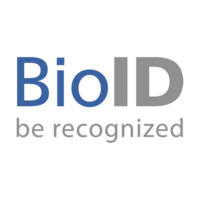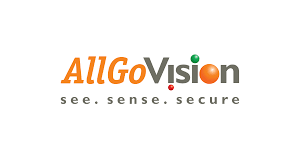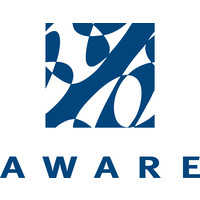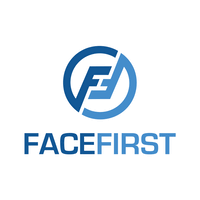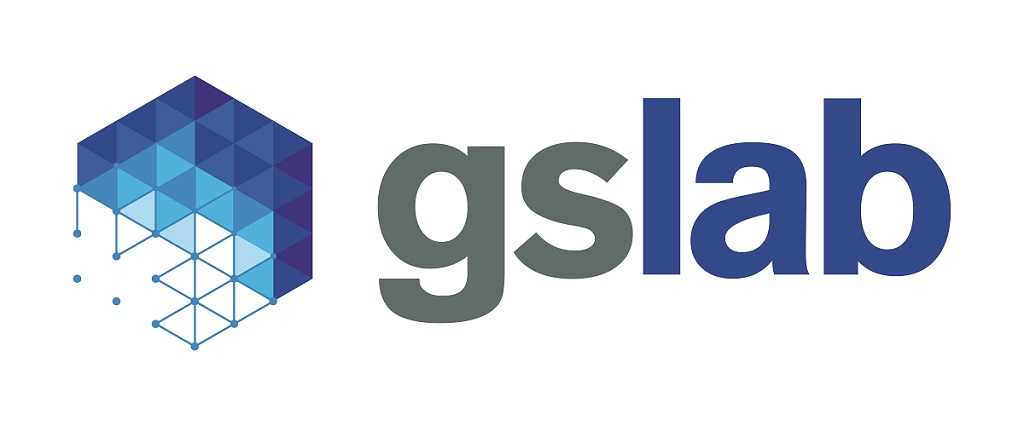What Is Face Recognition Software?
A potent technology that recognizes and authenticates people using their visual features is face recognition software. In order to generate a distinct facial template, it examines and maps particular facial traits, such as the separation between the lips, nose, and eyes. To identify the individual, this template is then compared to a database of previously saved templates.
Applications for face recognition software are numerous and include marketing, customisation, security, and surveillance. In order to allow entry to buildings and other sensitive places, security systems frequently use it. Additionally, it can be used to monitor staff attendance and stop time and attendance system fraud. Face recognition software is utilized for marketing and personalization in addition to security.
Real-time demographic analysis of its clientele allows it to show tailored ads or make product recommendations according to factors like age, gender, and ethnicity. This enables companies to give their clients more individualized and pertinent experiences. The precision of face recognition software is one of its primary advantages. Even in dimly lit environments or when facial hair, cosmetics, or facial expressions change, it can highly accurately identify people.
Because of this, it is a trustworthy and effective instrument for identification and verification. Face recognition software comes in two primary varieties: 2D and 3D. 2D face recognition software creates and compares facial templates using images taken by 2D cameras, like CCTV cameras or smartphones. However, 3D face recognition software creates a more precise and detailed template by using depth-sensing cameras to take a three-dimensional picture of the face.
Selecting a trustworthy and dependable supplier is crucial when thinking about buying facial recognition software. Seek out software with advanced features like multiple user access and real-time tracking, as well as excellent accuracy and customization options. Making sure the program conforms with relevant privacy rules and regulations is also essential.
What Are The Recent Trends In Face Recognition Software?
The market has seen a surge in facial recognition software due to recent technology developments and rising security demands. Based on a person's face traits, this software reliably identifies and authenticates them using biometric information and artificial intelligence. The face recognition software market has seen new trends as a result of the ongoing technological advancements, which have increased its efficacy and efficiency.
Combining machine learning with deep learning algorithms is one of the latest developments in face recognition software. This enables the program to keep learning and enhancing its facial recognition precision. In situations where there are different lighting conditions, positions, and facial emotions, this is extremely helpful. The application of 3D facial recognition technology is another trend.
In order to find a match, a 3D model of a person's face is created and compared to a database of other faces. Because it is more difficult to spoof or trick the system, this is more secure than conventional 2D recognition. Furthermore, contactless and touchless facial recognition technologies are becoming more and more popular, particularly in the wake of the COVID-19 outbreak.
These systems are perfect for high-traffic locations like airports, shopping centers, and office buildings because they use thermal imaging and infrared technology to detect and recognize faces without making physical contact. Additionally, facial recognition software is increasingly being used in consumer applications like online payment processing and smartphone unlocking.
The accuracy and usability of mobile face recognition have improved, offering users convenience and increased security. Furthermore, real-time tracking and analysis of people is now possible with a lot of face recognition software. In high-security situations, this enables better crowd control and greater monitoring capabilities.
Benefits Of Using Face Recognition Software
A state-of-the-art technology that has completely changed the process of facial recognition and identification is face recognition software. Businesses and people can profit greatly from this software's ability to recognize, analyze, and match facial traits in real-time through the use of sophisticated algorithms, artificial intelligence, and machine learning.
1. Improved Security: This is one of the biggest advantages of utilizing face recognition software. Businesses may guarantee that only authorized persons have access to their facilities or confidential data by putting this technology into practice. Because of the software's ability to precisely identify people, access by unauthorized workers is practically impossible.
2. Cost-Effective And Time-consuming: Conventional identification techniques, such ID cards or passwords, can be costly, time-consuming, and prone to human error. Face recognition software speeds up the identification process by allowing people to be recognized in a matter of seconds, doing away with the requirement for paper identity credentials. In the long term, this makes it a cost-effective choice.
3. Convenience: Businesses and people can benefit from the convenience that face recognition software provides. Businesses save administrative effort by not having to update passwords or reissue ID cards. Individuals can access a variety of facilities more easily because they are not need to carry or remember identity cards or passwords.
4. Fraud Prevention: By confirming a person's identification, facial recognition software can aid in the prevention of fraud and identity theft. This is particularly helpful in the government and financial industries when private data is involved. Additionally, it stops unauthorized people from utilizing forged or stolen identification documents.
5. Data Collection And Analytics: Businesses may use face recognition software to gather demographic information about their customers, including age, gender, and ethnicity. This information can then be utilized for more focused marketing campaigns and a deeper comprehension of their target market. Additionally, facial recognition software can help businesses enhance their operations by analyzing client behavior, like how long a customer spends at a specific area.
6. Contactless Engagement: Facial recognition software provides contactless engagement, which has become essential in the contemporary global environment. For a more smooth and secure experience, it reduces the requirement for physical contact and can be combined with additional technologies like temperature scanning.
Important Factors To Consider While Purchasing Face Recognition Software?
To make an informed choice, there are a few crucial aspects to take into account when buying facial recognition software. It is essential for you as a consumer to thoroughly assess the program in light of your unique needs and specifications. When investing in facial recognition software, bear the following points in mind:
1. Accuracy And Reliability: The software's accuracy and dependability should be taken into account first. This is crucial since the software will be in charge of recognizing and validating people using their facial traits. To evaluate the software's accuracy and dependability, be sure to verify the manufacturer's promises and seek out unbiased reviews.
2. Compatibility: It's crucial to confirm that the facial recognition software works with your current devices and systems before making a purchase. For a seamless user experience, it should be able to interface with your software and hardware.
3. Features And Functionality: A variety of features and functions may be available in different facial recognition software. Determining which features are vital for your needs as a consumer and making sure the program has them are crucial. Face detection, recognition, tracking, and anti-spoofing technologies are a few typical features to search for.
4. Scalability: The software's scalability should be taken into account, depending on the size and requirements of your company. It is advised to spend money on software that can support more people and devices if you expect your company to expand in the future.
5. Security And Privacy: It is essential to make sure that the facial recognition software conforms with all applicable privacy laws and regulations, given the growing concern for data privacy. Strong security features should also be included in the program to guard against breaches and unwanted access.
6. User Interface: The software's usability and efficacy are greatly influenced by its user interface. An interface that is easy to use and intuitive can increase user adoption and produce better outcomes. To gain a sense of the software's usability and user interface, it is advised to browse reviews or watch a demo.
7. Cost: Especially for startups and small enterprises, cost is an important consideration. To make sure you are getting the most for your money, it is crucial to strike a balance between the software's functionality and price. To sum up, in order to make an informed choice when buying facial recognition software, it is necessary to carefully consider the aforementioned elements. Before making a final purchase, it is also advised to study reviews, ask for suggestions from reliable sources, and request demos.
What Are The Key Features To Look For In Face Recognition Software?
There are a few important factors to take into account when selecting facial recognition software in order to make an informed choice. These features will give you a smooth and easy-to-use experience in addition to improving the software's accuracy and performance. Look for the following characteristics as you peruse the many options:
1. Recognition And Facial Detection Accuracy: Accurately detecting and identifying faces is the main goal of face recognition software. Selecting software with a high accuracy rate will help reduce the likelihood of both false positives and false negatives. To make sure the program can correctly identify faces in a variety of situations, look for features like 3D facial recognition, multi-angle detection, and liveness detection.
2. Scalability: Scalability is an important element to consider if you are thinking about deploying facial recognition software for a large corporation or for several locations. As your demands grow, this will enable you to add more users and devices to the software without sacrificing accuracy or performance.
3. Data Security: Data security must to be a primary concern, just like with any software. Seek out face recognition software that integrates with your current security procedures, provides encryption, and enables safe data storage. Additionally, confirm that the software includes the safeguards required to prevent hackers and illegal access.
4. User-Friendly Interface: Software should have an intuitive and user-friendly interface regardless of how sophisticated it is. You and your team will find it simpler to navigate and utilize the program effectively as a result. Look for features like simple data administration, easy access to reports, and drag and drop customization.
5. Compatibility And Integration: Take into account how well the facial recognition software works with the gear and systems you currently have. To optimize your operations, confirm that the software can easily interface with your attendance tracking, access control, and other programs. You can make sure that the face recognition software you purchase satisfies your requirements and offers you a dependable and effective solution by keeping these important characteristics in mind. Before deciding which option is ideal for your company, make sure to conduct in-depth research and watch demos.
Why Do Businesses Need Face Recognition Software?
One innovative technology that is completely changing how organizations function is face recognition software. Businesses may improve customer service, strengthen security, and expedite a number of procedures by using its capacity to reliably identify people based on their distinctive face traits. First and foremost, facial recognition software improves enterprise security by offering a very precise and trustworthy authentication technique.
Passwords, ID cards, and keys are examples of traditional forms of identity that are easily hacked, leading to security lapses and monetary losses. Businesses can lower the risk of security breaches by using face recognition software to make sure that only authorized people have access to critical places or information. Software that recognizes faces can also improve customer service.
Businesses can give their customers a more efficient and customized experience by identifying and keeping customer information. Face recognition software, for example, can be used in the hospitality sector to recognize and greet repeat patrons, resulting in a more unique and memorable experience. Furthermore, organizations can streamline many procedures by utilizing face recognition software.
For instance, the software can be used to monitor consumer demographics and behavior in the retail sector, enabling companies to adjust their marketing tactics appropriately. Additionally, it can be used in timekeeping and attendance systems, saving time and money by doing away with the need for human tracking.
Moreover, the use of facial recognition software can help avoid fraud. Businesses can stop fraudulent behaviors like identity theft, cheating, and frauds by correctly recognizing people. In addition to protecting the company, this also protects their consumers' interests.
How Much Time Is Required To Implement Face Recognition Software?
Numerous variables, including the system's size and complexity, the software's features and capabilities, and the implementing team's level of experience, might affect how long it takes to deploy facial recognition software. Implementing face recognition software completely can take a few weeks to several months on average.
Evaluating the organization's requirements and objectives for utilizing a face recognition system is the first stage in putting it into use. This entails determining the precise procedures and tasks that the program must automate or streamline, in addition to the system's intended level of precision and effectiveness. Depending on the extent and level of depth of the assessment, this first stage may take one to four weeks.
The next step is to choose and install the software. Depending on the software's complexity and the vendor's technical assistance availability, this typically takes one to two weeks. To make sure the software satisfies their needs and preferences, it is crucial to include essential stakeholders in this process. After installation, the program must be set up and tailored to the particular requirements of the company.
Creating user accounts, specifying access levels, and integrating the system with pre-existing databases or procedures are a few examples of this. Depending on the system's size and complexity, this step may take two to eight weeks. To guarantee accuracy and efficacy, the system must be evaluated and improved upon after initial setup and configuration.
Depending on the quantity of test cases and the degree of modification required, this could take two to six weeks. The program must then be completely implemented and made available to all pertinent users. One to two weeks may be needed for this, plus an extra week or two for system familiarization and training.
What Is The Level Of Customization Available In Face Recognition Software?
Face recognition software is a potent instrument that is transforming a number of sectors, including retail and law enforcement. However, choosing the software that best suits your needs might be difficult due to the wide variety of solutions available on the market. The degree of customization that a face recognition program enables is a crucial consideration.
The ability to modify facial recognition software to meet the specific needs of a given application or organization is known as customization. This entails having the ability to modify features, settings, and algorithms to attain the best possible performance for a given use case. Now let's examine the various degrees of personalization that facial recognition software offers.
The majority of face recognition software enables users to alter fundamental parameters like camera location and facial recognition thresholds. Businesses or applications with basic requirements, such access control or employee attendance monitoring, benefit from this degree of customisation. Some software has more sophisticated tools that enable a greater degree of customization as you move up the customization ladder. This can involve building unique databases, teaching the program to identify particular faces or objects, and modifying facial recognition settings to satisfy particular needs.
Businesses or applications that need more accurate and exact recognition, such VIP access control or law enforcement, benefit from these features. Advanced facial recognition software, which provides total flexibility and control, is at the top of the customizing range. Access to sophisticated analytics and reporting, the capacity to create custom algorithms, and integration with other applications or systems are all included in this degree of customization.
For businesses and organizations with complicated requirements and a team of specialists to fully utilize the program, this degree of customisation is perfect. In conclusion, there are differences in the degree of customization that facial recognition software may offer, therefore it's critical to evaluate your unique needs and select a program that provides the degree of customisation required for your application or business.
To guarantee the best fit for your needs, pick carefully because greater customisation does not always translate into better performance. We hope that this tutorial has given you the knowledge you need to make an informed choice by assisting you in understanding the many degrees of customisation that are available in face recognition software.
Which Industries Can Benefit The Most From Face Recognition Software?
Face recognition software is a quickly developing technology that could have a big impact on a lot of different businesses. It is now a necessary tool for companies and organizations trying to improve security and operational efficiency. We will go over which sectors stand to gain the most from facial recognition software and how it may transform their operations in this buyer's guide.
1. Security And Surveillance Sector: The sector that uses facial recognition software the most is the security and surveillance sector. Businesses, government organizations, and public places like train stations and airports have been utilizing this software more frequently as a result of the increase in criminal activity and security issues. For these industries, its capacity to precisely identify people in real-time and compare them to a database of known suspects has made it an essential tool.
2. Retail And hotel Sector: Face recognition software can be utilized in the retail and hotel sector to improve overall operations and the customer experience. Businesses may detect potential shoplifters or fraudsters, identify loyal consumers, and make targeted offers by integrating the program into their systems. This technology can be used by hotels and restaurants in the hospitality industry to expedite check-in procedures and guarantee the protection and safety of its patrons.
3. Education Sector: To increase employee and student safety and security, the education sector has also begun utilizing facial recognition software. Schools and universities may track visitors on campus, keep an eye on attendance, and spot potentially dangerous people by using this program. It is also possible to combine the program with school management systems, which facilitates the tracking of staff and student movements.
4. Banking And Financial Sector: To stop fraud and identity theft, the banking and financial sector uses facial recognition software. Customers can be swiftly and precisely validated using biometric technology, which guarantees the security of their financial transactions. Additionally, it can assist banks in stopping money laundering and spotting fraudulent activity.
5. Healthcare Sector: Face recognition software has a lot to offer the healthcare sector as well. This technology allows clinics and hospitals to precisely match patients with their medical records, guaranteeing that the right treatment is given. Sensitive patient data can be protected by using it to control access to restricted areas.
Conclusion
To sum up, selecting the best facial recognition software for your requirements necessitates carefully weighing a number of variables, including security, usability, and accuracy. Before choosing, it's critical to evaluate your budget and particular needs. Above all, accuracy is an important consideration. To ensure accurate results, look for software that uses sophisticated algorithms and has a high recognition rate.
Additionally important is user-friendliness, which makes navigating simple and streamlines the process for administrators and end users alike. When choosing a facial recognition program, security should also be the first consideration. Make sure it has safeguards in place to secure sensitive data and complies with stringent security policies. Take into account the software's scalability as well.
Choose a solution that can expand with you if you expect the number of users or locations to increase in the future. Finally, before making a purchase, don't be afraid to use free samples or demonstrations to test the features and functionality of the product. This will provide you with practical experience and assist you in making a well-informed choice.
In conclusion, making an informed and advantageous purchase requires knowing the components of a trustworthy face recognition program. You can improve security, boost productivity, and simplify procedures in your company with the correct solution.



